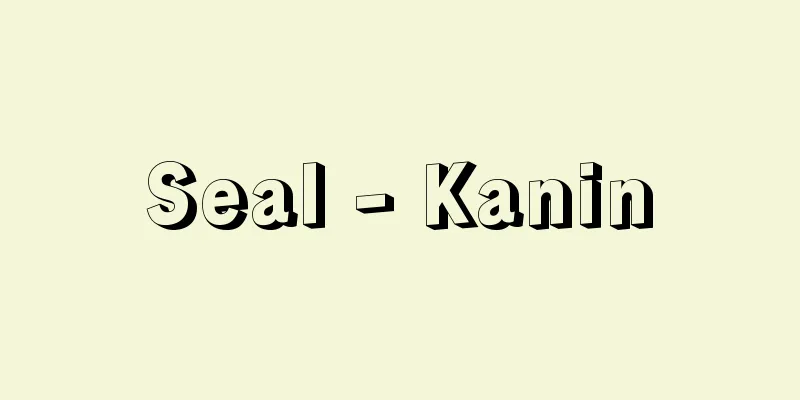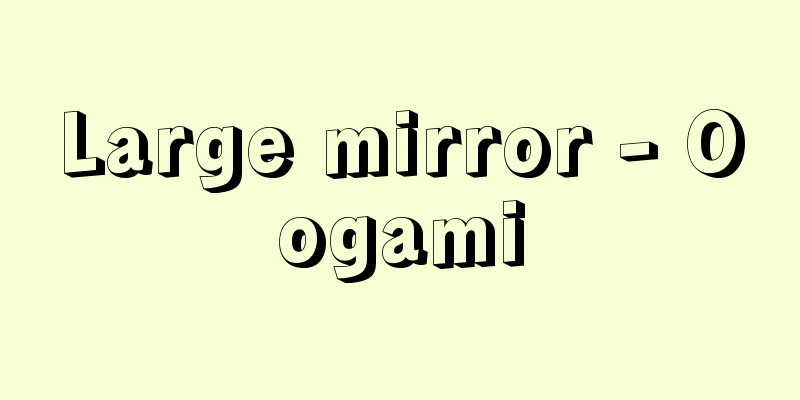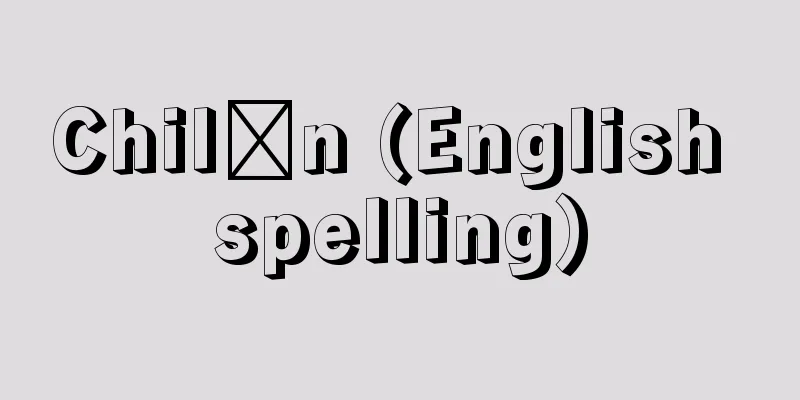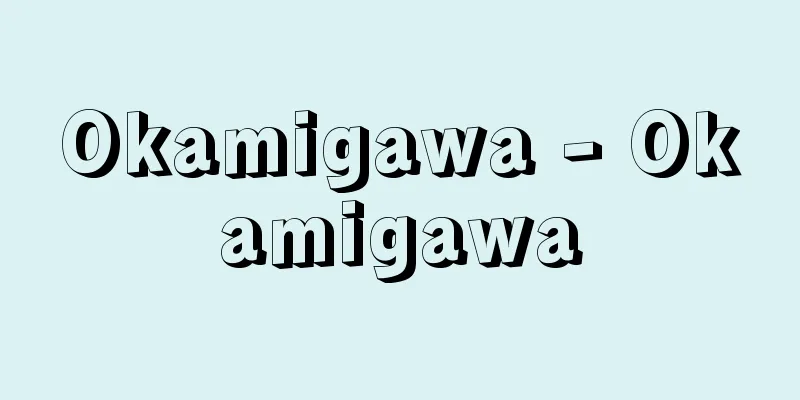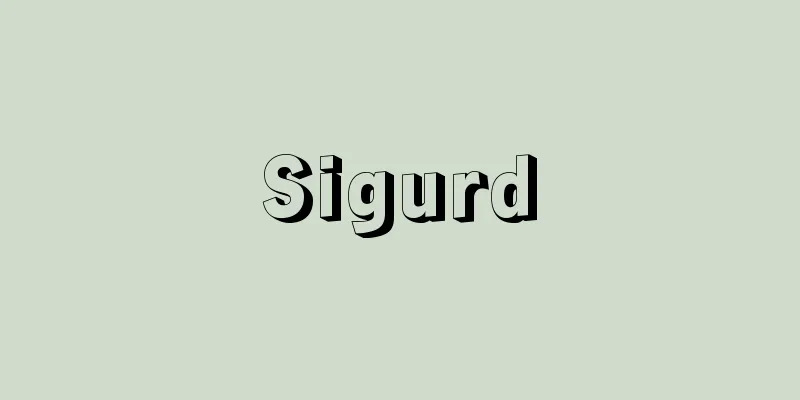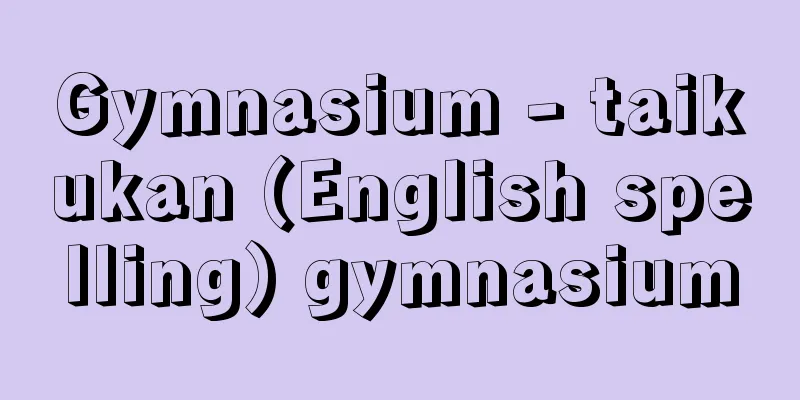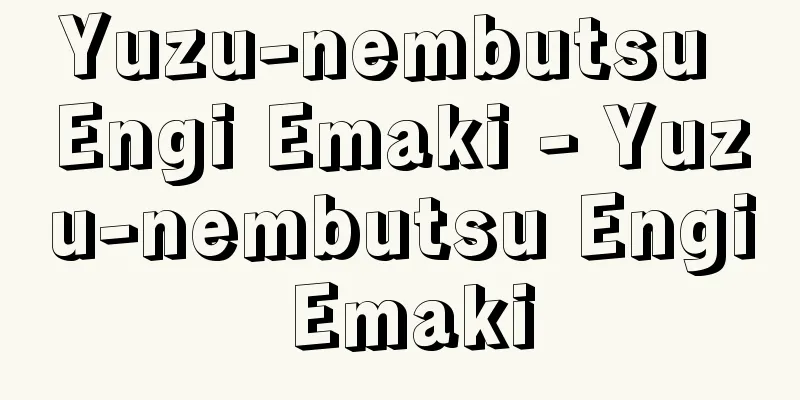Intervertebral Disc Herniation
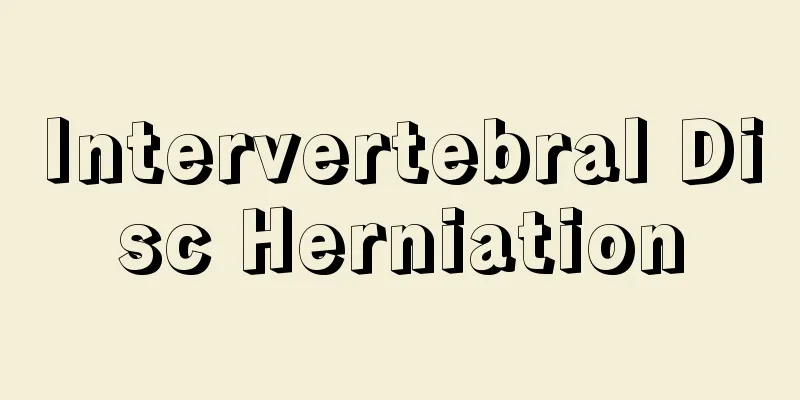
|
◎ It tends to occur in the lower lumbar vertebrae [What kind of disease is it?] ◎ Symptoms are different in the lower back and neck [Symptoms] [Testing and diagnosis] ◎ In the acute phase, first rest [Treatment] [What kind of disease is it?] Intervertebral discs are located between the vertebrae and act as cushions to absorb shocks applied to the spine (vertebral column). The intervertebral disc has a gelatinous, soft, elastic part called the nucleus pulposus in the center, which is surrounded by several layers of relatively hard cartilage called the annulus fibrosus. This distributes the forces applied to the spine from above and below evenly throughout the disc, cushioning the impact. In your 20s, the intervertebral disc begins to degenerate, the annulus fibrosus loses its elasticity, and cracks begin to appear in places. On the other hand, the nucleus pulposus still contains enough water and maintains its elasticity, so when a strong force is applied to the intervertebral disc, the pressure inside the disc temporarily rises, and the nucleus pulposus is pushed out through the cracks in the annulus fibrosus (herniation of the nucleus pulposus). This condition is called a herniated disc. Cracks in the annulus fibrosus often occur in the posterior lateral or posterior (back) areas where resistance is weak, where the spinal cord and nerve roots branching off from the spinal cord are located (see figure "Herniated disc in the lumbar spine"), and these are compressed by the herniated nucleus pulposus, causing symptoms such as pain. People who are prone to the disease Herniated discs are a disease common to men in their 20s and 30s, in which the nucleus pulposus still has elasticity and the annulus fibrosus has cracked. It is most likely to occur in the lower lumbar vertebrae, and much of the lower back pain seen in men in this age group is caused by this disease. This often occurs when a strong force is applied to the intervertebral disc, such as when you suddenly twist your waist or lift something heavy while squatting. ● Areas where it is likely to occur It often occurs in the lumbar vertebrae, but it can also occur in the cervical vertebrae (neck spine), but this is much less common than in the lumbar vertebrae. A herniated disc in the cervical vertebrae can cause pain and numbness in the hands. [Symptoms] Symptoms vary depending on the location of the herniation. Also, the degree of herniation of the nucleus pulposus and the severity of the symptoms are not necessarily proportional. There are cases where the symptoms are severe even though the degree of herniation is mild, and vice versa. ■ Lumbar disc herniation: This can manifest as sudden, severe pain when lifting something heavy or twisting your waist, known as a slipped disc. Immediately after the onset of symptoms, the pain is so severe that you cannot move, but it usually subsides within 2 to 3 weeks and then becomes chronic. It can also begin without any notice with a dull lower back pain or numbness in the hands and feet, and the symptoms will disappear after a while, but then recur without any notice, making it a chronic type. Whether acute or chronic, lumbar disc herniation often causes not only lower back pain, but also sciatica, a severe pain that runs from one buttock to the back of the thigh, from the knee to the outside of the ankle, and even to the toes. A characteristic of sciatica caused by a hernia is that the pain gets worse when you cough, sneeze, or strain during a bowel movement; this is sometimes called Dangera syndrome. The pain increases when you bend forward when washing your face or when you squat or bend your waist, but the pain is relieved when you keep your back straight or lie down and rest. In addition to pain, you may experience numbness, weakness, and sensory impairment, and you may tend to stumble over things. Tendon reflexes (the reflex in which a muscle contracts when a tendon is struck; for example, when you lightly tap your kneecap, your leg will reflexively lift) may become weaker, and muscle atrophy and weakness may occur. ■ Cervical disc herniation When a cervical disc herniation occurs, it mainly causes pain, numbness, and weakness that radiates to either the left or right arm, and pain in the back of the neck makes it impossible to move the neck. When the nucleus pulposus prolapses significantly to the center of the back, it directly compresses the spinal cord rather than the nerve roots, causing numbness from the toes upwards and down the chest to the arms. As a result, people are prone to having trouble walking, and may stumble, especially when going up and down stairs, so care is required. ●Department to visit Various diseases of the kidneys, urinary tract, genitals, etc. can cause symptoms similar to those of a herniated disc, but if you are experiencing lower back pain or numbness in your legs, you should visit an orthopedic surgeon. [Testing and diagnosis] First, we will ask you in detail about your symptoms and progress, and find out what posture you are in and how the pain is. We also check for Lasegue's sign, a condition in which severe pain runs from the lower back to the toes when you lie on your back and raise your legs straight up. In addition, by examining in detail the extent of sensory impairment, areas of muscle weakness, and the state of tendon reflexes, it is possible to determine which area has a herniated disc. However, to differentiate it from other spinal and spinal cord diseases, X-rays, electromyography, blood tests, and urine tests may be performed. If it is a herniated disc, no abnormalities will be found in the blood or urine tests. A simple X-ray taken from outside the body cannot detect a herniated disc, but an MRI scan can provide a good picture of the condition of the disc. When it is necessary to know the exact location and condition of a hernia for surgery, etc., special X-ray examinations such as myelography, in which an iodine preparation is injected into the spinal cavity, are performed. [Treatment] The pain of a herniated disc is caused by the compression of the nerve root by the protruding nucleus pulposus and inflammation of the nerve root and its surrounding area, so during the acute phase of severe pain, taking anti-inflammatory analgesics and resting will result in relief within a few days to a week. However, even if the inflammation disappears temporarily, the hernia will not retract, so once the pain subsides and becomes chronic, traction therapy, heat therapy, and exercise therapy will be performed. Traction therapy involves pulling and stretching the spine in the hope that the herniated nucleus pulposus will retract naturally. The purpose of heat therapy is to warm the painful parts of the lower back and legs, loosen the stiff muscles, and at the same time improve blood circulation in the hernia area to cure inflammation. It can be done not only in a hospital's physical therapy room, but also by taking a leisurely bath in lukewarm water at home. Acupuncture is effective in relieving muscle stiffness and breaking the vicious circle in which pain causes muscles to stiffen, which then causes the bones and nerves to become fixed in position, making it impossible to relieve pain. It is even more effective when combined with exercise therapy. In addition, in order to strengthen your muscles, especially your abdominal muscles, it is important to do the exercises for lower back pain (Figure "Exercises for Lower Back Pain (1)," Figure "Exercises for Lower Back Pain (2)," Figure "Exercises for Lower Back Pain (3)," Figure "Exercises for Lower Back Pain (4)"). If symptoms persist despite receiving these outpatient treatments, or if the pain is so severe that you cannot walk, hospitalization will be necessary. At the hospital, the patient will be placed on bed and undergo traction therapy for long periods of time, as well as undergoing an epidural block, in which local anesthetics and steroids (adrenal cortical hormone drugs) are injected into the painful area. If that still doesn't work, surgery may be an option. ●Surgery Before surgery, an MRI or spinal cord imaging is performed to confirm the location and condition of the hernia. Surgery is usually performed under general anesthesia. Surgical methods include posterior surgery, in which the back is incised and the herniated nucleus pulposus is removed, and anterior surgery, in which the herniated disc is removed from the ventral side. The choice of which method to use depends on factors such as the size of the herniation, the degree of degeneration of the disc, and the condition of the vertebrae near the herniated area. You will need to stay in hospital for about a month, but you will be able to walk after about two weeks. The progress after surgery will vary depending on the surgical method, but you may need to wear a corset for a certain period of time or undergo exercise therapy to strengthen your back and abdominal muscles. You should follow your doctor's instructions and avoid putting any strain on your spine during the prescribed rest period. ● When surgery is not possible immediately If you are unable to undergo surgery immediately for various reasons, you should have regular checkups and ask your doctor for instructions on what to be careful of in your daily life and at work. However, in severe hernias, even if symptoms are temporarily alleviated with conservative treatment (treatment without surgery), the condition will soon recur. In addition, as the disease recurs repeatedly, the herniated nucleus pulposus and the nerve root may become fused together, or the nerve root may become degenerated due to pressure. At this point, complete recovery cannot be expected even with surgery. To avoid this, if your doctor recommends surgery, it is important to make arrangements to have the surgery as soon as possible. Recently, a method called percutaneous nucleotomy has become available in which the nucleus pulposus can be removed by inserting an endoscope through a small hole in the skin rather than making a large incision, and the period of rest after surgery has been shortened. However, not all hernias can be treated in this way, so be sure to get a thorough explanation from your doctor. Source: Shogakukan Home Medical Library Information |
|
◎腰椎(ようつい)の下部におこりやすい [どんな病気か] ◎腰部と頸部では症状がちがう [症状] [検査と診断] ◎急性期には、まず安静に [治療] [どんな病気か] 椎間板は、椎体(ついたい)と椎体の間にあって、背骨(せぼね)(脊柱(せきちゅう))に加わる衝撃をやわらげるクッションの役目をしています。 椎間板は、中央にゼラチンのような、やわらかい弾力性のある髄核(ずいかく)という部分があり、その周囲には繊維輪(せんいりん)という、比較的かたい軟骨が幾重にも囲んでいて、脊柱に上下から加わる力を全体に均一に分散させ、衝撃をやわらげています。 20歳代になると、椎間板の変性が始まり、繊維輪の弾力性がなくなり、ところどころに亀裂が生じ始めます。 一方、髄核はまだ水分を十分含んでいて、弾力性も保たれているので、椎間板に強い力が加わると、椎間板内部の圧が一時的に上昇し、繊維輪の亀裂から髄核が押し出されてきます(髄核の脱出)。この状態を、椎間板ヘルニアといいます。 繊維輪の亀裂は、抵抗の弱い後側方や後方(背中側)に生じることが多いので、そこには脊髄や脊髄から分かれた神経根(しんけいこん)があるため(図「腰椎におこった椎間板ヘルニア」)、それらが脱出した髄核によって圧迫され、痛みなどの症状がおこります。 ●病気になりやすい人 椎間板ヘルニアは、髄核にまだ弾力があって、繊維輪に亀裂ができた20~30歳代の男性に多い病気で、腰椎の下部にもっともおこりやすく、この年代の男性にみられる腰痛(ようつう)の多くは、この病気が原因になっています。 急激に腰をひねったり、中腰で重いものを持ち上げたりしたときに、椎間板に強い力が加わっておこることが多いものです。 ●おこりやすい部位 腰椎におこることが多く、頸椎(けいつい)(くびの脊椎)におこることもありますが、腰椎に比べると頻度ははるかに低いものです。頸椎におこった椎間板ヘルニアは、手の痛みやしびれの原因になります。 [症状] ヘルニアのおこった部位によって症状はちがいます。また、髄核の脱出の程度と症状の強さは、必ずしも比例しません。ヘルニアの程度は軽いのに、症状が強いこともあれば、その逆のこともあります。 ■腰椎の椎間板ヘルニア 重いものを持ったり、腰をひねったりしたときに突然激しい痛みがおこる、いわゆるぎっくり腰(ごし)のかたちで発症することがあります。 発症直後は、激しい痛みで動けませんが、たいてい2~3週間で軽くなり、その後、慢性化します。 また、いつとはなしに、鈍い腰痛や手足(四肢(しし))のしびれ感で始まり、しばらくすると症状は消えるのですが、また、いつとはなしに再発するといったことをくり返す、慢性型で始まることもあります。 急性であれ慢性であれ、腰椎におこった椎間板ヘルニアでは、多くは腰痛のほかに、左右どちらかの臀部(でんぶ)(おしり)から、太ももの後ろ側、膝(ひざ)から足首までの外側、さらにつま先にまで激しい痛みが走る坐骨神経痛(ざこつしんけいつう)の症状をともないます。 ヘルニアによる坐骨神経痛の特徴は、せき、くしゃみ、あるいは排便時にいきんだりするだけでも痛みが強くなることで、これをデンジェラ症候(しょうこう)ということもあります。 顔を洗うときに前かがみになったり、中腰など、腰を丸める姿勢でも痛みが増し、背中をまっすぐに伸ばしたり、寝た姿勢で安静にしていると、痛みは軽くなります。 さらに、痛みのほかに、しびれや脱力感、知覚障害がみられ、ものにつまずきやすくなったりします。 腱反射(けんはんしゃ)(腱を打つと筋肉が収縮する反射。膝頭(ひざがしら)を軽くたたくと、反射的に足がはね上がることで知られています)が鈍くなったり、筋肉の萎縮(いしゅく)、筋力の低下が現われることもあります。 ■頸椎の椎間板ヘルニア 頸椎に椎間板ヘルニアがおこると、おもに左右どちらかの腕に放散する痛み、しびれ、脱力感などがおこり、くびの後ろ側が痛むため、くびが動かせなくなったりします。 髄核が後方中央に大きく脱出したときは、神経根よりも脊髄を直接圧迫するために、しびれ感が足の先から上のほうに上がり、胸のあたりから腕までしびれます。 そのため、歩行障害がおこりやすく、とくに階段を昇り降りするときによろけたりすることがあるので、注意が必要です。 ●受診する科 腎臓(じんぞう)、尿路、性器などのいろいろな病気で椎間板ヘルニアに似た症状がおこりますが、腰痛や下肢(かし)(脚(あし))のしびれ感があるときは、整形外科を受診しましょう。 [検査と診断] まず最初に問診で症状や経過を詳しく聞き、どのような姿勢で、どのように痛むかなどを調べます。 また、あおむけに寝て、足をまっすぐ伸ばしたまま上に上げると、腰からつま先まで強い痛みが走るラセーグ徴候(ちょうこう)があるかどうかを調べます。 そのほか、知覚障害の範囲、筋力低下の部位、腱反射の状態などを詳しく調べることで、どの部位に椎間板ヘルニアがおこっているかまで知ることができます。 しかし、他の脊椎や脊髄の病気と鑑別するために、X線検査、筋電図検査、血液検査、尿検査が行なわれることもあります。椎間板ヘルニアであれば、血液・尿検査に異常はみられません。 なお、脊椎を体外から撮影する単純X線検査では、椎間板ヘルニアを発見することはできませんが、MRIによる画像検査を行なうと、椎間板のようすがよくわかります。 手術などのために、ヘルニアの位置と状態を正確に知る必要があるときは、脊髄腔(せきずいくう)にヨード製剤を注入して撮影する脊髄造影などの、特殊なX線検査が行なわれます。 [治療] 椎間板ヘルニアの痛みは、脱出した髄核によって神経根が圧迫されることと、神経根やその周囲に炎症がおこることが原因ですから、痛みの激しい急性期には、消炎鎮痛薬を内服して、安静にしていれば、数日~1週間で楽になります。 しかし、炎症が一時的に消えても、ヘルニアがひっこんでしまうわけではないので、痛みが軽くなって慢性化したら、牽引(けんいん)療法や温熱療法、運動療法が行なわれます。 牽引療法は、脊柱をひっぱって伸ばし、脱出した髄核が自然にひっこむのを期待する療法です。 温熱療法の目的は、腰や脚の痛む部分を温めて、かたくなった筋肉をやわらかくし、同時にヘルニアがおこっている部分の血行をよくして、炎症を治すことです。病院の理学療法室だけでなく、自宅のお風呂で、ぬるめの湯にゆっくりと入ることも効果があります。 鍼(はり)は、筋肉のこわばりをとり、痛みで筋肉がかたくなり、筋肉がかたいために骨や神経の位置関係が固定して痛みがとれないといった悪循環をたちきるのに有効です。運動療法と組み合わせると、いっそう効果的です。 また筋肉、とくに腹筋を強化するために、腰痛体操(ようつうたいそう)(図「腰痛体操(1)」、図「腰痛体操(2)」、図「腰痛体操(3)」、図「腰痛体操(4)」)を行なうことがたいせつです。 通院でこれらの治療を受けても、症状が頑固(がんこ)に続く場合や、痛みがひどくて歩くこともできないようなときは、入院が必要になります。 病院では、ベッド上で牽引療法を長時間続けるとともに、局所麻酔薬やステロイド薬(副腎皮質(ふくじんひしつ)ホルモン薬)を痛む部位に注入する硬膜外(こうまくがい)ブロックなどが行なわれます。 それでもなお効果がない場合は、手術の対象になります。 ●手術 手術の前に、MRIや脊髄造影を行ない、ヘルニアの位置や状態を確認します。手術はふつう、全身麻酔で行なわれます。 手術の方法には、背中を切開して脱出した髄核を切除する後方手術と、腹側からヘルニアを椎間板ごと摘出する前方手術とがあります。 どちらの方法を選ぶかは、ヘルニアの大きさ、椎間板の変性の程度、ヘルニアをおこした部分の近くの脊椎の状態などによって決められます。 1か月くらいの入院が必要ですが、2週間もすると歩けるようになります。手術後の経過は、手術法によってもちがいますが、一定期間はコルセットを使ったり、背筋や腹筋を強化する運動療法が必要になることもあります。 担当医師の注意を守り、決められた安静期間内は、脊椎に負担がかかるようなことは避けなければなりません。 ●すぐに手術ができないとき いろいろな事情で、すぐに手術が受けられないときは、定期的に診察を受け、医師から日常生活や仕事面で注意すべきことを指示してもらいましょう。 しかし、重度のヘルニアでは、保存的療法(手術せずに治療すること)で一時的に症状が軽くなっても、またすぐに再発します。 また、再発をくり返しているうちに、脱出した髄核と神経根が癒着(ゆちゃく)したり、圧迫によって神経根が変性におちいったりすることがあります。こうなってからでは、手術しても完全な回復は望めません。 こうしたことにならないためにも、医師から手術を勧められたら、なんとか都合をつけて、早めに手術を受けることがたいせつです。 最近は、大きく切開せずに、皮膚の小さな孔(あな)から内視鏡を入れて髄核を摘出する方法(経皮的髄核摘出術(けいひてきずいかくてきしゅつじゅつ))が行なわれるようになり、手術後の安静期間も短縮されました。 しかし、すべてのヘルニアがこの方法で治療できるわけではないので、主治医からよく説明を受けるようにしてください。 出典 小学館家庭医学館について 情報 |
Recommend
Watanabe Suiha
Haiku poet. Born in Tokyo. Real name Yoshi. Eldes...
Aegyptopithecus
…The differences between humans and apes include ...
Character reader - Mojiyomitorisouchi (English spelling) character reader
A device that reads characters. There are those th...
Aranta
…A tribe of Aboriginal people living in the arid ...
Cartouche
In the 18th century, thefts such as burglary, the...
Chat Noir (English)
...It is a bar with a stage and a dance hall for ...
Mwata Kazembe (English spelling)
...The kingdom became the most powerful in Centra...
Pyotr Andreevich Vyazemskiy
Russian poet, critic, and prince. In the 1810s an...
confession - 100
〘Noun〙① (also " hyohyaku ") Buddhist ter...
Alvarez, LW - Albarez
...In fact, it often coexists with β + decay, but...
German Mutoskop und Biograph (English)
...However, early German films were not worth see...
Weir - Ruins
〘 noun 〙 A place where river water is dammed up wi...
Gaucho - Gaucho (English spelling)
People who graze cattle in the grasslands (pampas...
Gerhaert van Leyden, N.
...In the second half of the 14th century, the Pa...
Tsuruga Wakasa no Jō
The founder of the Shinnai-bushi Tsuruga school. H...
